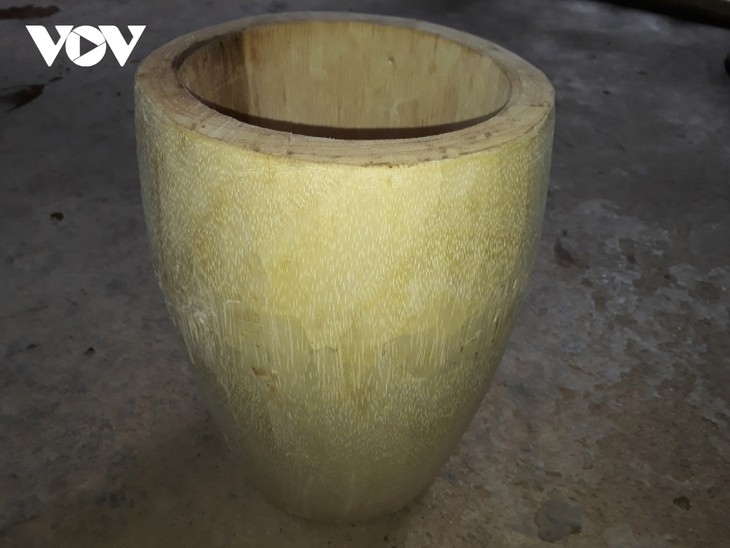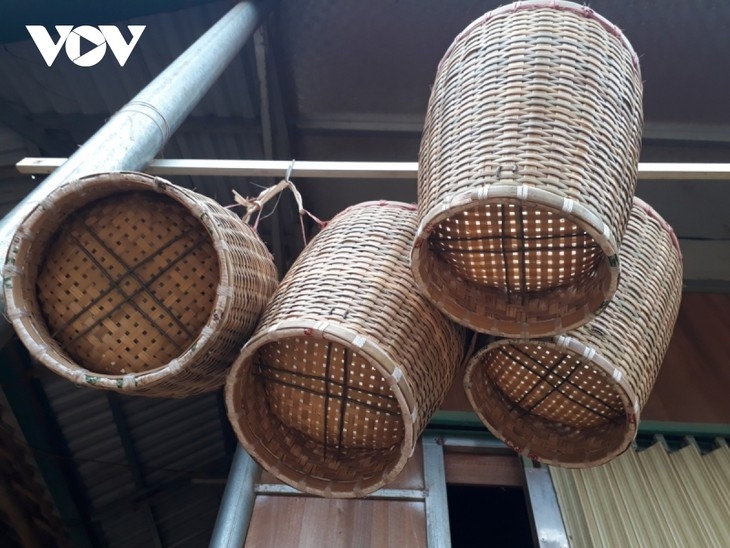Glutinous rice steamer of the Thai
VOV.VN - A steamer is a familiar item of kitchenware among the Thai ethnic minority people in Vietnam’s northwestern region, which is used to steam rice and other dishes.

Although the life of the Thai has changed a lot, every household still uses a wooden or bamboo steamer every day.
The Thai people in the northwestern part of Vietnam live in stilt houses and have a diet that consists largely of steamed glutinous rice, vegetables, roots, and fruits.
For boiling water, every household has a bronze pot similar in shape to an hourglass. A bamboo rack with a narrow bottom and a flared top is placed on the pot to steam glutinous rice and other food. Thai parents often give a steamer to their son when he gets married and starts his own family.
According to Tong Van Hịa, a Thai ethnic of Son La city, every Thai family has a bronze pot and a steamer. When a son gets married, his parents give him a steamer as a dowry.
“The young couple use the steamer to cook the first glutinous rice meal in their new house, wishing their wooden stove will burn continuously as a symbol of happiness and prosperity,” says,” says Hia. “They steam not only glutinous rice but many other foods to eat with rice.”

In the past the steamer was carved from a durable wood which resists cracking. Now people weave bamboo or rattan steamer, which are cheaper and more environmentally friendly.
Hịa says they choose long, straight, mature bamboo tubes. The bamboo is split into strips and finely polished to remove splinters. To weave a two-layer steamer, they use thin strips for the outer layer and wider strips for the inner layer. The outer layer should be woven neatly. Between the two layers they insert fiber to hold the heat.
Hịa notes that takes three to four days to make a rack. He further elaborates, “Making a wooden steamer is very difficult, and only men can do it. Now we make bamboo and rattan steamers to steam rice and other food. If we left a wooden steamer unused for a long time, it would crack. It’s easier to find material for and weave bamboo steamers. We don’t have to cut trees in the forest.”

When steaming rice or another food, they put a round bamboo griddle inside the steamer, which fits the narrow bottom.
“The steamer is a kitchen essential. All our guests want to eat glutinous rice. They order hot sticky rice, grilled sticky rice, or fried sticky rice,” says Tong Thi Bien, who owns a Thai restaurant.
Thai people sell bamboo steamers at mountain fairs or shops of tribal products. It costs about US$6 - 7 for a bamboo steamer and US$13 - 20 for a wooden steamer, depending on the size.

